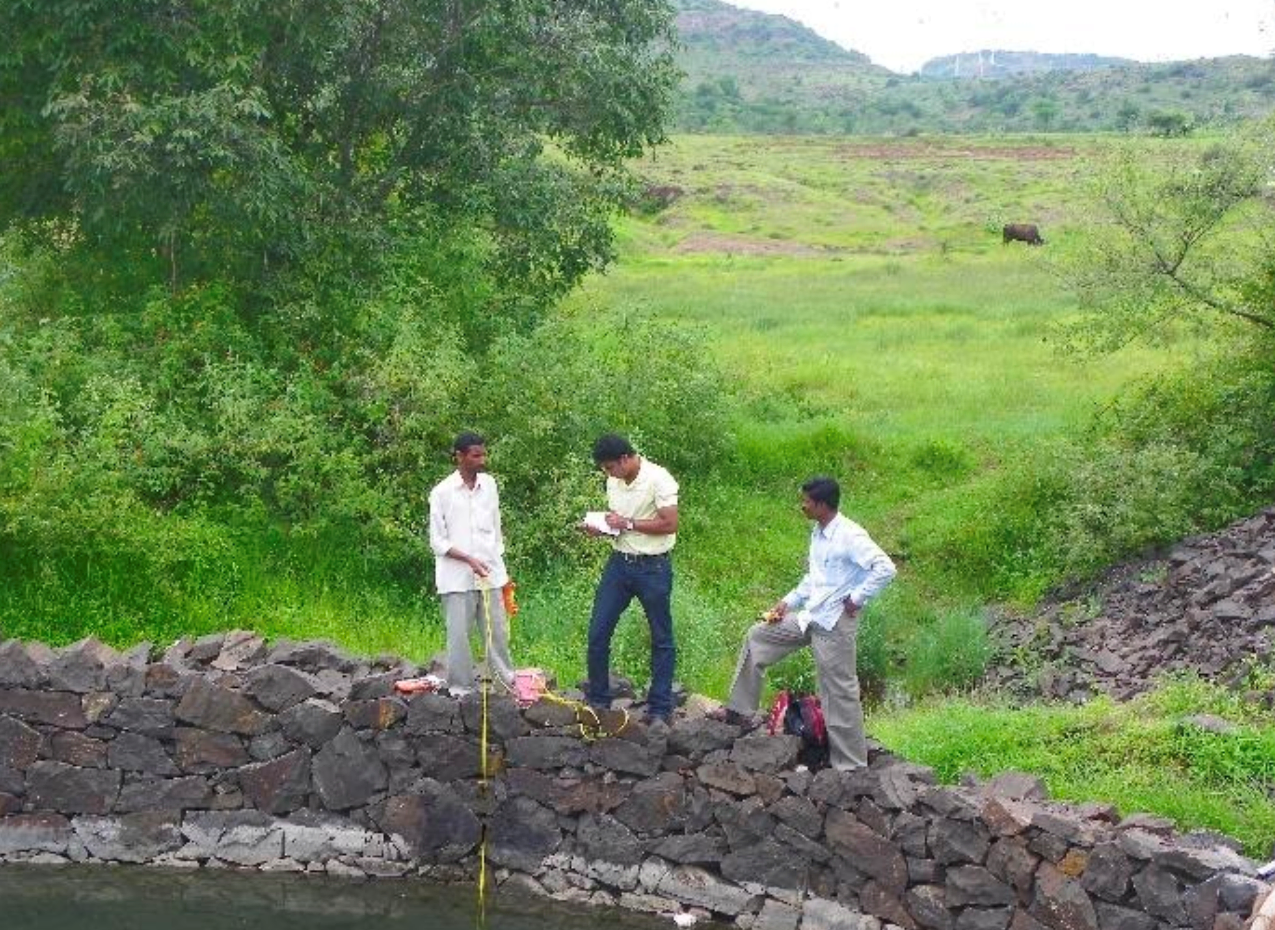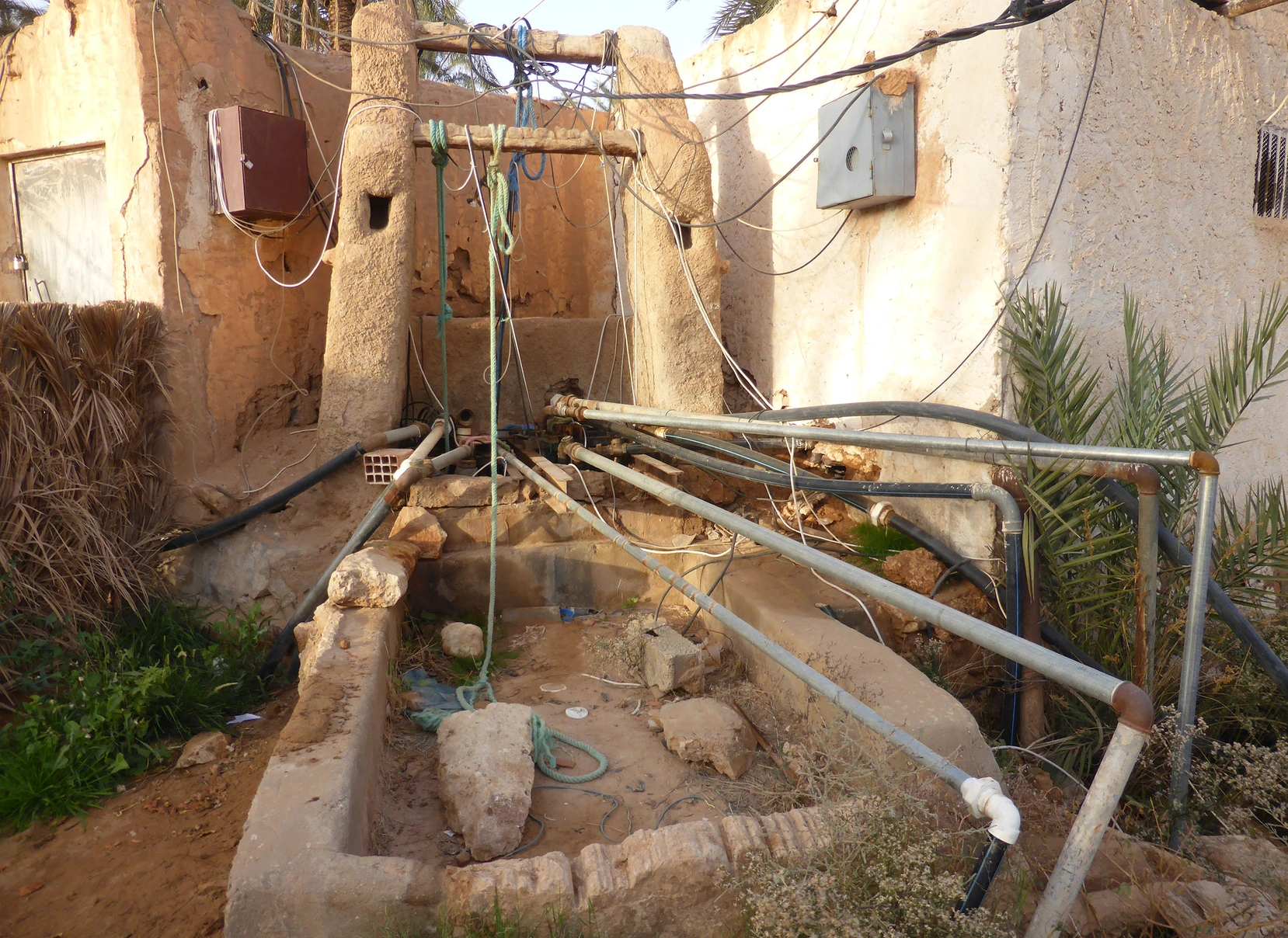
In the oases of Algeria’s M’Zab valley, farming systems are based on the principle of circularity. In Peru’s Motupe Valley, farmers use a system of pozas, to saturate the soil and make possible a short-season crop without additional irrigation. And in Maharashtra, India, a community-managed system of wells provides a sustainable way of using of groundwater.
Billions of people around the world rely on groundwater for their everyday existence, and manage it in very different ways. Groundwater is invisible, and its points of control are not evident. That makes it notoriously difficult to know and account for groundwater and, ultimately, to manage it.
In a world with a changing climate, it becomes increasingly important to manage groundwater sustainably. Efforts to intensify agriculture to meet growing food needs or improve productivity and profits will be short lasting if relying on the exploitation of groundwater resources.
As part of Belmont Forum, NORFACE and International Science Council research programme Transformations to Sustainability (T2S), the Transformations to Groundwater Sustainability (T2GS) project investigated promising grassroots initiatives of people organizing around groundwater in places where pressures on the resource are particularly acute, such as India, Algeria, Morocco, USA, Chile, Perú and Tanzania.
‘Grassroots initiatives in groundwater management often defy or challenge conventional wisdom and even scientific knowledge,’ said Margreet Zwarteveen, the T2GS project leader and a professor of water governance at the University of Amsterdam and IHE Delft. ‘But there’s no “one size fits all” solution to groundwater sustainability. So, the T2GS project has worked to develop case studies that contain creative insights into a variety of ways to deal with the tensions that characterize groundwater governance.’
Those tensions that characterize groundwater governance can be between individual and collective interests and between short-term gains and longer-term sustainability.
T2GS studied groundwater practices by combining qualitative ethnographic methods with hydrogeological and engineering insights to explore the knowledges, technologies and institutions that characterize these initiatives.
‘We want to establish a network of excellence that joins researchers, activists, communities and policy makers in a shared quest to achieve more sustainable and equitable modes of groundwater governance,’ said Margreet.

Photo: ACWADAM Pune
The T2GS team conducted some of its first collaborative fieldwork studies in Randullabad, a small village of smallholder farmers in the rural areas of Maharashtra, India. Like many other villages in the drought-prone rain shadow area of the Western Ghat region of Maharashtra, Randullabad is completely dependent on groundwater for meeting its household and agricultural water needs.
A system of 190 wells has evolved to provide groundwater access to small farmers, thereby contributing to efficient application of water to many lands through a community-managed groundwater resource system.
‘During the fieldwork, we saw how villagers have successfully developed participatory strategies to manage, use, re-charge and take care of groundwater within their village,’ said Himanshu Kulkarni, a hydrogeologist who leads the ACWADAM organization.
‘We heard from villagers who shared stories about their attempts to develop a sustainable way of living with, and sharing, groundwater resources.’
The villagers make decisions about watershed development and management based on scientific understanding and data collected at the village level. There is a system of operations and maintenance of the watershed structures and equitable water distribution in the village.
“ACWADAM along with another Pune-based NGO BAIF Development Research Foundation worked together to support the villagers of Randullabad in setting up a community-based system of groundwater management. ACWADAM (a non-profit organisation consisting mainly of hydrogeologists) and SOPPECOM (an non-governmental organisation consisting of social scientists) revisited the Randullabad story nearly ten years after the programme was initiated. The fieldwork showed how the community effort supported by non-profit organisations has sustained itself through local-level governance.”
‘Randullabad is an exemplary case that shows how grass-roots initiatives contain the seeds of sustainable, and often ignored, ways of caring for, sharing and regulating groundwater,’ said Himanshu.
The experience in Randullabad helped the team formulate sub-projects to develop case studies in Peru, Morocco, Algeria, USA, Tanzania and Zimbabwe.
For centuries – long before the Spanish arrived – farmers along the arid coastline of Peru have used an indigenous system of pozas to irrigate, control runoff and recharge groundwater. Pozas are basins or ponds – either diked with walls or excavated – that capture water in times of abundance to prolong soil moisture availability and maintain groundwater levels after seasonal rains.
‘In our research activities, we trace pozas and the local knowledge about groundwater in Motupe today while also delving into an anthropological study of pozas,’ said Carolina Domínguez-Guzmán, an anthropologist with a PhD from the University of Amsterdam. As part of the joint learning objectives of the T2GS project, the Peru team compared and contrasted poza-related practices across valleys in Peru.
Engineers and water managers in Peru have often referred to poza-irrigation as archaic, backward and hugely inefficient in comparison to, for example, drip irrigation. Nevertheless, thousands of smallholders in Peru continue to rely on their pozas for irrigating their crops. Carolina and her colleagues were curious to learn from these smallholders who used poza systems about why they did so.
‘We saw quite a divergence among the local and technoscientific groundwater knowledge’ said Carolina. ‘Modern technologies like drip irrigation may reduce the amount of water used per plant but are not necessarily saving water at plot or watershed levels. Drip irrigation may also not be affordable for smallholder farmers, or difficult to justify especially when they don’t have water rights.’
In Motupe, smallholder farmers have started planting mangos for the export trade, irrigating the crop with pozas. Mango trees tolerate waterlogging and are drought resistant. Their taproots reach far into the ground. The farmers Carolina spoke to knew of the importance of maintaining groundwater and saw pozas as an effective way to help realize this.
‘Our study has enabled us to change the body of knowledge and vocabulary about the governance of groundwater,’ said Carolina.
In the oases of Algeria’s M’Zab valley in the Algerian Sahara, farming systems are based on the principle of circularity. Beginning in the 11th century, local communities in the M’Zab oases progressively developed an ingenious circular hydraulic system that combines the use of surface and underground water resources.
The system captures floodwater and recharges the shallow groundwater aquifer through hydraulic devices. The water can then be made available to the community, for drinking and for irrigation of crops, through shallow wells.
New Saharan agricultural systems developed over the past 50 years are replacing this circular system. ‘These intensive agricultural systems are generally situated outside of the existing oases and rely on pumped groundwater from the deep aquifers which often are not renewable,’ said Meriem Farah Hamamouche, a team member and water science specialist. ‘The environmental impacts of these new systems can be severe.’
Not all communities and farmers engaging in the intensification of agriculture and extending their cropped area do so by unsustainably exploiting the aquifer. The T2GS team found some places in which people purposively decided to care for their groundwater, making sure that enough of it remains available for future generations.

A dug well in the Beni Isguen oasis (Algeria) for irrigation and domestic supplies. Photo: Marcel Kuper
The project generated case studies that document community wisdoms and practices of sustainable groundwater management. And they highlight that over time – often centuries – communities do sometimes develop systems that fit and are adjusted to very specific environmental conditions.
The diversity of conditions, situations and contexts often shape the responses to groundwater problems in different parts of the world. While goals around sustaining resources and livelihoods may be common, collective thinking and community decisions often follow different trajectories of actions and activities in pursuing such goals. The core lessons from the project, therefore, are about local decision making and actions that represent a spectrum of groundwater governance actions.
‘Our project highlights that there is no singular pathway to groundwater sustainability,’ said Margreet. ‘In fact, effective groundwater management practices often rely on forms of bricolage in which technologies, institutions and knowledge from different sources are patched together in new creative ways to suit particular places and circumstances.’
Margreet is proud that the project has generated new inspiration for thinking about and dealing with the interconnections and interdependencies between humans and groundwater.